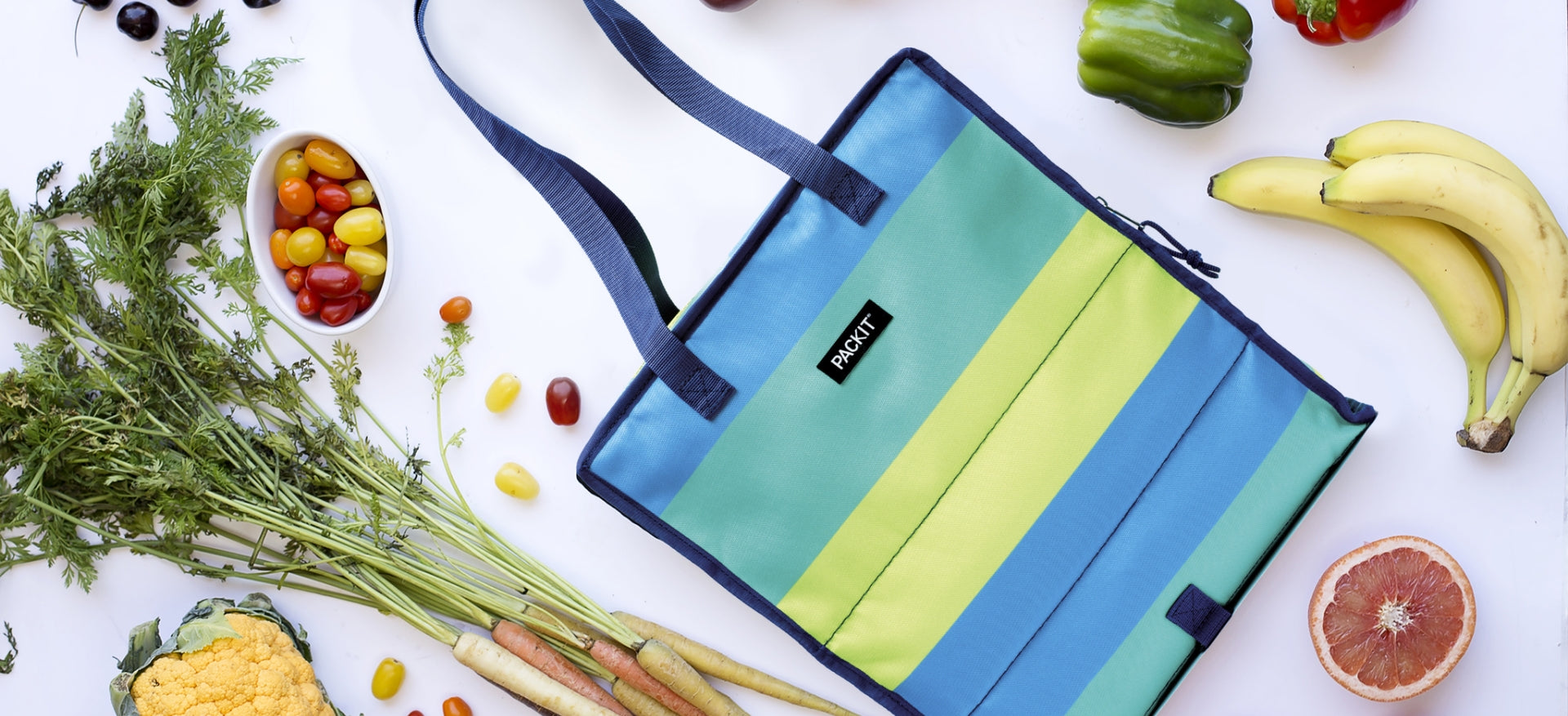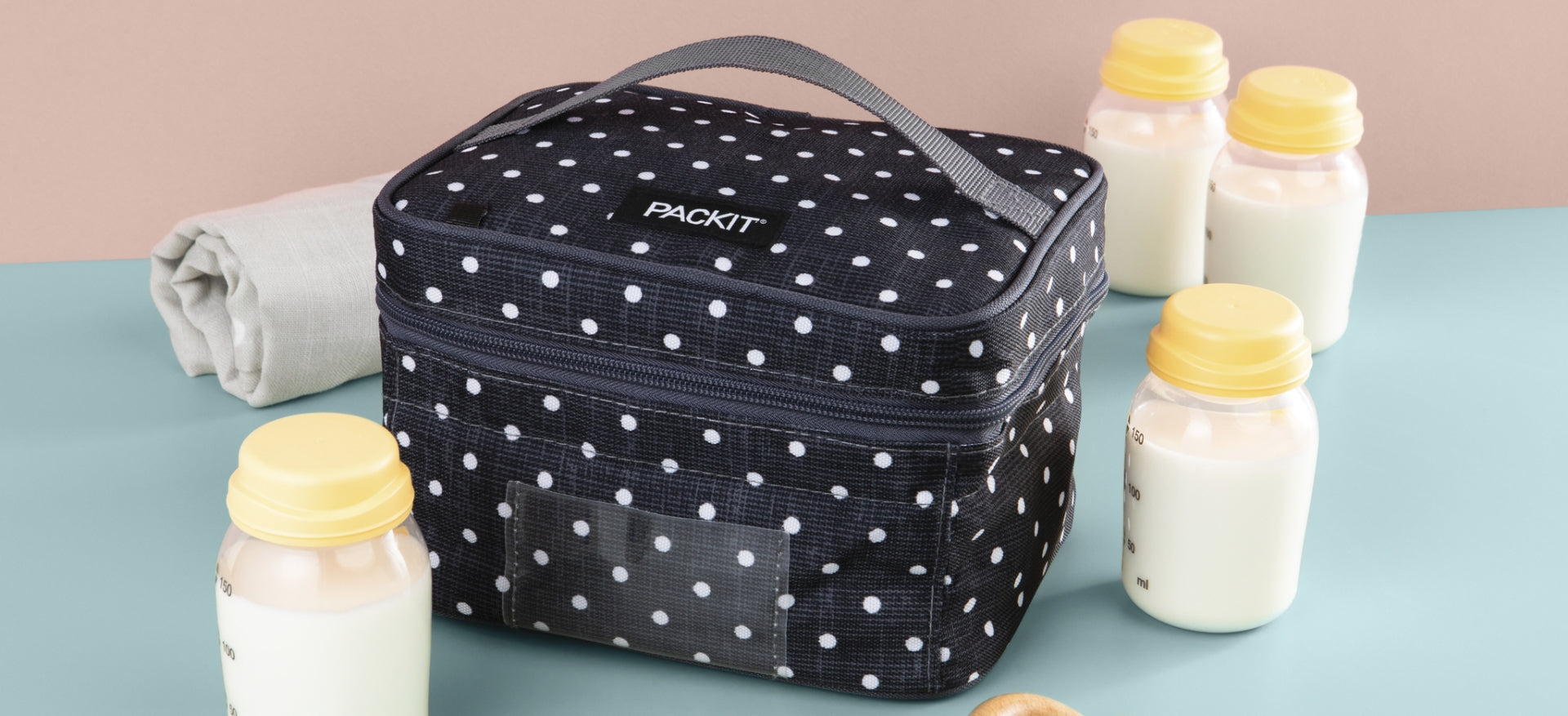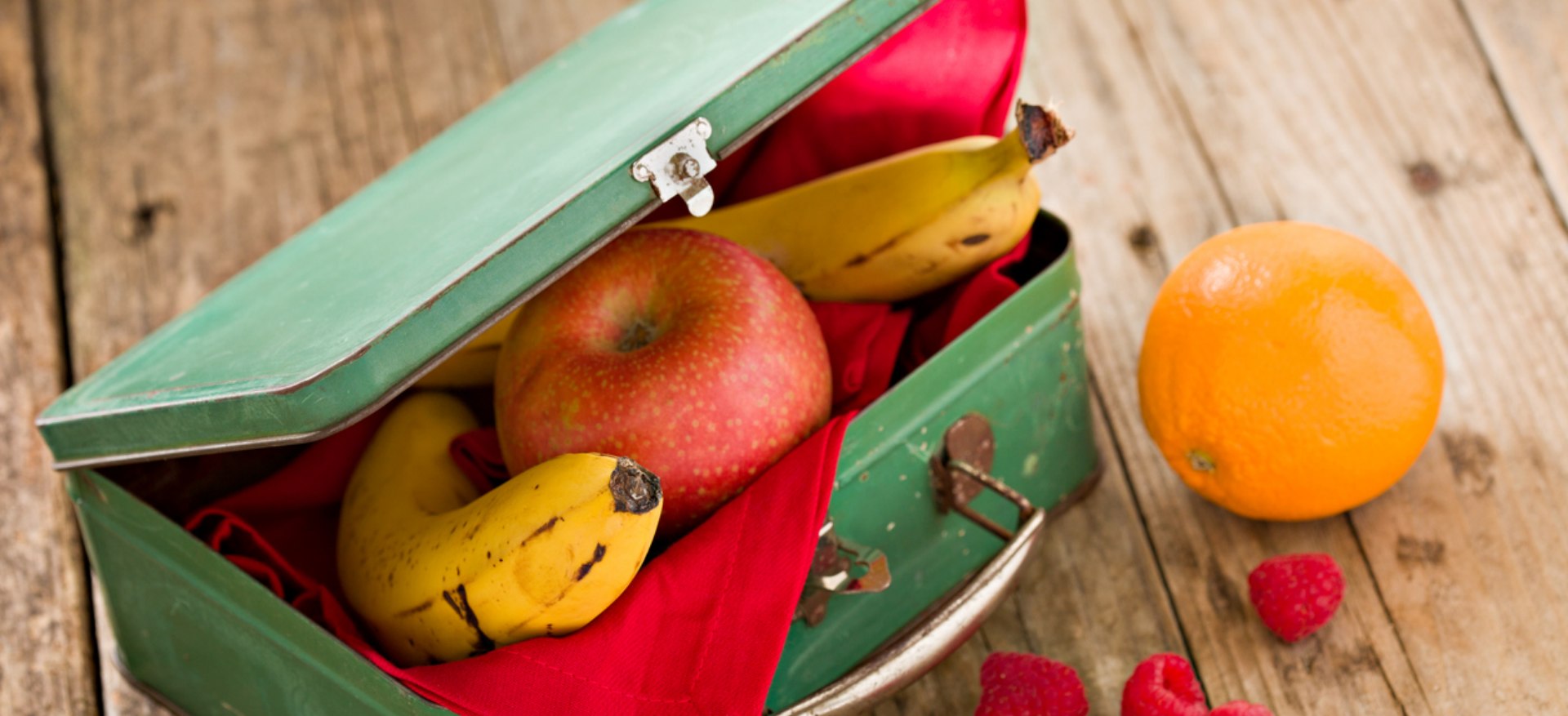The History of Grocery Bags & How PackIt Is Bringing Grocery Bag Design Into the 21st Century

Self-check-out lanes, mobile apps, home delivery – it seems every aspect of grocery shopping has become more modern and convenient. Just look at the evolution of the grocery bag. From the brown paper bag to the widespread adoption and subsequent backlash of single-use plastic, the history of grocery bags continues today with an innovative zero-waste solution that doesn't skimp on convenience, style or performance.
Keep reading to learn more about the history of bags and discover the latest grocery bag design, PackIt's Freezable Grocery Tote.

When Were Bags Invented & Who Invented Them?
With mentions throughout the documented history of all civilizations, it's impossible to know who invented bags.
However, the invention of burlap bags can be traced to 1793 India, where fibers from the native jute plant were woven together to create burlap fabric. And until the mid-19th century, this is how bags were made – by hand, using natural materials.
When Were Paper Bags Invented?
Mass-produced paper bags were invented in 1852, with one major drawback – they didn't have bottoms. At this point, you're probably wondering: Is a bag without a bottom…a bag?
"Large, not terribly useful paper envelopes" more accurately describes the output of this new machine, but no matter – it was a 19th-century disruption. A machine-made, disposable carrier unlike anything seen before? It's no surprise their inventor was able to call them whatever he liked.
Square-Bottomed Grocery Bag Design
Margaret Knight, a worker at a paper bag company, invented a mechanism to automate the process of making paper bags with a flat, square bottom, which revolutionized the industry and made square-bottom paper bags the norm. Despite the eventual dominance of plastic bags in the market, the design of the functional grocery bag has remained popular over time, with modern paper bags still using updates of Knight's patented machine, and new bags made from modern materials still maintaining the classic square-bottom shape.
For instance, PackIt's Freezable Grocery Tote has the shape of a block bottom bag but with advanced materials that provide structural integrity, a comfortable carry and cooling capabilities that paper could never deliver.
Paper Bag History Develops With New Additions
In 1912, a St. Paul, Minnesota grocer invented a reinforced, handled shopping bag after seeing his customers struggle to carry brown grocery bags. On behalf of all shoppers everywhere, thank you, Walter Deubener.
This part of paper bag history is as enduring as the square-bottom bag. The best modern grocery bag designs include reinforced seams and handles or straps to carry more, farther.

Paper or Plastic? Bag History Takes a Turn
America's plastic bag history started in 1979, and by the 1990s, plastic bags had taken over the world.
The obvious advantage for retailers was that they were much cheaper than paper bags. Shoppers preferred them because durable and weather-resistant plastic proved relatively easier to carry.
What We Know Now About Our History of Bag Choices
The Swedish engineer who invented the one-piece, high-density polyethylene grocery bag in 1965 thought it was better for the environment because it was reusable and saved trees. However, plastic bags are so cheap to make and easy to use that they have become a single-use product due to convenience, with serious environmental consequences.
The original breast milk cooler includes a clear pocket for a name and date card. Plus, you get your pick of fun styles like polka dots.
Eight states have banned single-use plastic bags, and some of the nation's largest retailers, like Walmart and Kroger, are planning a nationwide ban or pilot-testing bagless stores. Similar efforts have been made all over the world.
Although the history of bags has a dark side, today's policymakers and consumers are wiser to the realities of plastic pollution, and many people are choosing alternatives for getting their purchases home. The demand has created new styles of grocery bags that are better than ever, and transporting fresh food has never been easier.
We all love a good bag, but have you ever stopped to think about the environmental impact of your bag choice? Here are some mind-blowing stats that might just make you rethink your go-to carry-all:
- Did you know that paper manufacturing in the US alone accounts for a whopping 4% of all energy consumption and greenhouse gas emissions? Yikes.
- And what about paper bags? While they may seem like the eco-friendly option, they actually require cutting down trees, with an estimated 14 million trees chopped down each year in the US just for paper bags.
- For plastic bags, did you know that a staggering 10 million tons of plastic end up in our oceans every year, threatening marine life and ecosystems? Not cool.
- But there's hope yet! Several cities and countries are taking action by banning or taxing single-use plastic bags, with the European Union leading the way by implementing a ban in 2019. So let's all do our part by choosing reusable bags and supporting initiatives that promote sustainability.
These stats show that our bag choices can have a big impact on the environment. Let's all make conscious choices and help protect our planet!
Reusable but Cooler Grocery Bag Design
The 90s saw what a plastic bag habit can do to a planet, and the modern reusable tote was born.
Over the years, improved materials like insulation have been incorporated into reusable grocery bag designs. Perishable foods can go without refrigeration for one to two hours, and insulation helps make the most of that time – but only by adding ice or ice packs can you keep foods safe for longer than two hours.
PackIt is the bag that's an ice pack, with the features of a traditional reusable tote plus the functionality of a cooler. None of the many different types of grocery bags, with or without insulation, have PackIt's built-in cooling capabilities.

From Jute to Gel: The Evolution of Grocery Bag Materials
The evolution of the grocery bag has brought us to an eco-friendly fridge on the go that's stylish and functional.
You can use PackIt's grocery tote as-is or fold it up and put it in the freezer overnight to turn it into a portable cooler. Patented EcoFreeze® Technology turns the bag's interior gel lining frozen, completely surrounding whatever is placed inside the bag. There are no ice packs in the carrying space to pack, arrange or keep track of.
Browse the PackIt Collection
PackIt has taken the best features of each iteration in the evolution of the grocery bag and created a grocery tote for the ages.
- Square-bottomed with a roomy interior
- Long, comfortable shoulder straps
- Made of long-lasting, non-toxic materials
- Soft, structured panels that provide support and fold up easily
- Innovative technology to keep contents cool without the need of ice packs
PackIt carries it all – groceries, school lunches, baby bottles, medicines and much more. Whether you need a mini cooler to protect your phone and makeup from the heat or bento containers customizable to any meal, let PackIt's technology and design help you keep things cool and organized.
Find the next evolution of the grocery bag at PackIt today!
SHOP NOW

